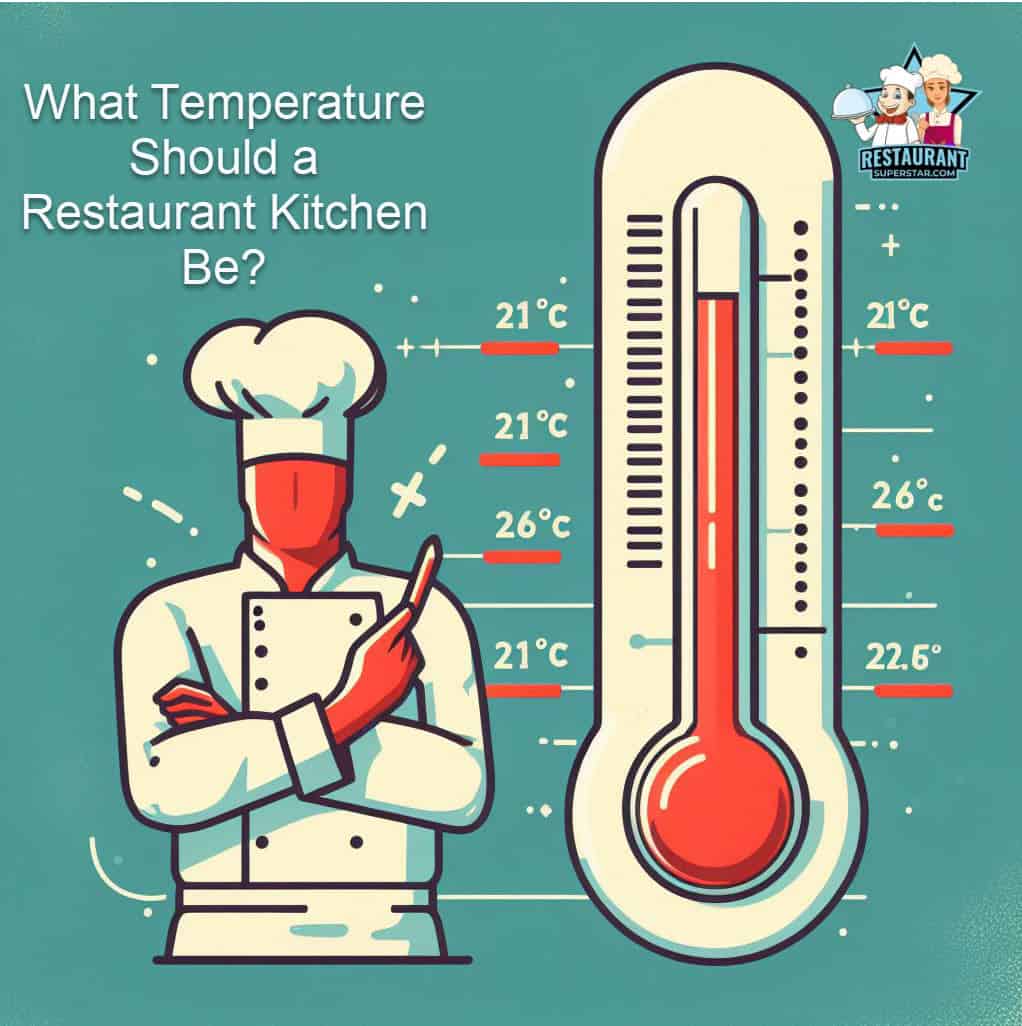Effortless Tips for Cleaning Your Commercial Deep Fryer with Baking Soda
Cleaning a commercial deep fryer might seem daunting, but with baking soda, it becomes a breeze.
As someone who’s dealt with the greasy aftermath of a busy kitchen, I know the struggle of maintaining spotless equipment.
Yet, the solution isn’t as elusive as it seems. Baking soda, a humble pantry staple, is a powerful ally in cutting through grime and ensuring your fryer functions optimally.
Imagine transforming a grimy fryer into a gleaming piece of equipment without the harsh chemicals or expensive cleaners. It’s not just about aesthetics; a clean fryer enhances food quality and extends the life of your appliance. I’ll guide you through a straightforward process that harnesses the natural cleaning power of baking soda. Whether you’re a seasoned kitchen pro or new to the culinary scene, this method will save you time and effort while keeping your fryer in top shape.
Importance of Cleaning a Commercial Deep Fryer
Cleaning commercial deep fryers is crucial for more than just appearances. Improved food quality directly results from maintaining a clean fryer.
Residual oil and debris degrade over time, impacting both the taste and health of the cooked food. Customers notice even subtle changes in food quality, which can affect a business’s reputation. A consistently clean fryer ensures that every dish leaves the kitchen tasting as intended.
Efficient fryer operation starts with routine maintenance. Accumulated grease and food particles clog the parts, making the appliance work harder and increasing energy consumption.
A regularly cleaned fryer operates at optimal efficiency, leading to lower utility bills and extended equipment life. Reducing energy costs can significantly impact a business’s bottom line, especially in high-volume establishments.
Safety remains a paramount concern in any kitchen. Burner malfunction and oil fires are real risks when fryers are neglected.
Regular cleaning reduces these risks by preventing grease buildup and ensuring proper operation of safety mechanisms. Kitchen staff feel more at ease when working with equipment that is clean and functions well, promoting a safer work environment.
Health regulations demand clean equipment in commercial kitchens. Regular inspections focus on cleanliness standards, and non-compliance may result in penalties or even shutdowns. Maintaining a clean fryer helps meet these standards, ensuring uninterrupted operations. Businesses that prioritize cleanliness stand ready for any inspection, safeguarding their license to operate.
Ultimately, a clean fryer embodies professionalism and pride in culinary standards. Customers see a reflection of the kitchen’s hygiene in the quality of the food they enjoy. Each dish served acts as a testament to the meticulous care taken behind the scenes. For chefs and business owners alike, investing time in cleaning their fryers pays dividends in customer satisfaction and operational success.
Preparing for the Cleaning Process

Getting ready to clean a commercial deep fryer ensures the task goes smoothly and safely. Using baking soda requires specific preparations.
Safety Precautions
Safety is critical when dealing with hot oil and electrical appliances. First, unplug the fryer and let the oil cool completely to avoid burns. While handling any leftover oil, wear heat-resistant gloves. It’s important to work in a well-ventilated area to minimize inhalation of any fumes. Since water and electricity are a hazardous combination, keep all electrical components dry at all times. Finally, familiarize yourself with the manufacturer’s guidelines on cleaning to prevent any voided warranties or damage.
Required Supplies
Gather essential supplies before starting the cleaning process. Baking soda is the primary cleaning agent, known for its ability to break down grease. A large container is needed to safely store used oil or dispose of it according to local regulations. Use soft brushes and cloths to scrub surfaces without scratching them. A sponge and a non-abrasive scouring pad will help tackle stubborn grime. Keep a large bucket of warm water handy for rinsing parts. For hard-to-reach areas, a toothbrush can be useful. Finish by using clean, dry towels for drying. Having these items ready ensures a thorough and efficient cleaning experience.
Step-by-Step Cleaning Guide

Cleaning a commercial deep fryer with baking soda is straightforward when following these steps closely. Let’s ensure your fryer is in top condition.
Cool and Drain the Oil
Begin by confirming the oil is completely cool. I check this by touching the outside of the fryer; if it’s warm, it’s not ready. Once cooled, carefully drain the oil into a container designated for used oil. Having proper storage helps with later disposal or recycling. If the oil is reusable, filter debris before storage to maintain quality.
Scrape Off Food Residue
After oil removal, inspect the fryer for leftover food particles. Using a plastic or wooden scraper, scrape off any stuck-on food residues. I prefer these materials because they prevent scratching the fryer’s surface. Collect all loosened bits into a container for easy disposal.
Prepare the Baking Soda Solution
Next, create a cleaning solution with baking soda. Combine half a cup of baking soda with two quarts of warm water. Stir until the baking soda dissolves completely. This solution serves as a powerful degreaser, leveraging baking soda’s natural cleaning properties.
Apply the Solution and Scrub
Carefully apply the baking soda solution to the fryer’s interior using a soft brush or sponge. Ensure coverage of heavily stained areas for maximum effect. I scrub in circular motions to dislodge stubborn grease deposits, allowing the baking soda to break down oils effectively. Usually, a few minutes of scrubbing reveal significant results.
Rinse and Dry
Finally, rinse the fryer thoroughly with clean water. Remove all solution remnants to prevent residue build-up in future uses. I use a damp cloth followed by a dry towel to ensure the inside is completely dry. A well-dried fryer maintains its efficiency and readiness for use.
Benefits of Using Baking Soda

Commercial deep fryers often require thorough cleaning to function effectively and maintain food quality. Baking soda excels in this task for several reasons. Firstly, it stands out as a non-toxic option, ensuring the safety of kitchen staff and customers without introducing harmful chemicals. This natural compound effectively breaks down grease, making it ideal for deep fryers covered in stubborn residues.
Additionally, cost-efficiency is a major advantage. High-quality cleaning without expensive commercial products can significantly reduce operational costs for restaurants. With baking soda, substantial results are achievable on a smaller budget.
Versatility is another benefit of baking soda. It can clean various surfaces within the fryer, including baskets and trays, due to its gentle yet effective nature. Strong enough to tackle tough grease, it’s also safe for delicate fryer components. Coupled with its ease of use, baking soda provides a straightforward solution that integrates seamlessly into the regular cleaning routine of any kitchen.
Finally, baking soda promotes environmentally friendly practices. Unlike chemical-heavy cleaners, it impacts neither indoor air quality nor the environment, aligning with eco-conscious values increasingly prioritized by businesses and consumers alike. Using baking soda embodies a commitment to adopting sustainable methods while maintaining high standards of cleanliness and safety.
Maintenance Tips for Longevity

Regular maintenance ensures a commercial deep fryer stays in optimal condition. I always prioritize scheduling routine cleaning sessions. This attention helps prevent buildup that can impact both performance and safety. It’s crucial to inspect elements like the heating system and ensure they’re debris-free to avoid malfunctions.
Filters play a significant role in maintaining efficiency. I check and clean them frequently, as clogged filters can cause the fryer to overheat. Maintaining oil at the proper level is another key task. Low oil levels force the fryer to work harder, leading to wear and tear over time.
Grease traps are often overlooked. Ensuring these are emptied and cleaned reduces the risk of unpleasant odors and potential clogs. Maintaining sufficient ventilation by cleaning hoods and vents allows heat and fumes to escape properly, ensuring a safer kitchen environment.
During the inspection, I also check for leaks. Oil leaks can not only affect fryer performance but also pose significant fire hazards. I recommend keeping an extra set of gaskets on hand for quick replacements to minimize downtime.
Calibration of temperature controls guarantees accurate cooking temperatures. If the fryer seems to heat unevenly, I suggest calling for professional service to recalibrate or repair as needed. Finally, using a fryer cover when not in use prevents dust and debris from settling inside, extending the appliance’s lifespan. These practices ensure that the fryer continues to perform efficiently, maintaining the quality and safety standards essential to a successful culinary operation.
Key Takeaways
- Using baking soda to clean a commercial deep fryer is an effective, non-toxic alternative to harsh chemical cleaners, enhancing both safety and sustainability.
- Regular cleaning of fryers improves food quality, reduces energy consumption, and minimizes the risk of safety hazards such as burner malfunctions and oil fires.
- Proper preparation for cleaning involves cooling and safely draining the fryer oil and gathering necessary supplies like baking soda, soft brushes, and towels to ensure a thorough process.
- A straightforward cleaning routine includes scraping off food residue, applying a baking soda solution, scrubbing away grease, and properly rinsing and drying the fryer for optimal performance.
- Routine maintenance and inspection help prolong the life of a deep fryer, supporting efficient operation by ensuring elements like filters and grease traps remain clean and functional.
- Baking soda not only provides a cost-effective cleaning option but also aligns with eco-friendly practices, helping businesses minimize their environmental impact while maintaining high hygiene standards.
Conclusion
Cleaning a commercial deep fryer with baking soda is a practical and cost-effective solution that ensures both safety and quality in your kitchen. By following the outlined steps and maintenance tips, you can keep your fryer in top condition, enhancing food quality and prolonging the appliance’s life. Regular cleaning not only saves on energy costs but also aligns with health regulations, reducing the risk of malfunctions and ensuring a safer work environment. Embracing baking soda as a cleaning agent reflects a commitment to sustainability and professionalism, ultimately contributing to customer satisfaction and the success of your culinary operations.
Frequently Asked Questions
What are the benefits of using baking soda for cleaning commercial deep fryers?
Baking soda is a non-toxic and environmentally friendly cleaning agent. It effectively cuts through stubborn grease without the need for harsh chemicals, ensuring safety for kitchen staff and customers. Additionally, it is cost-efficient, reducing the need for expensive commercial cleaners. These qualities make baking soda a practical and sustainable choice for maintaining high cleanliness and safety standards in food service operations.
How does a clean deep fryer improve food quality?
A clean deep fryer ensures that residual oil and debris do not affect the taste and healthiness of the food. It prevents flavors from mixing and maintains the intended taste and quality of each dish. This directly impacts customer satisfaction and enhances a business’s reputation by serving consistently high-quality food.
What safety precautions should be taken during the cleaning process?
Before cleaning, unplug the fryer and allow the oil to cool completely. Wear heat-resistant gloves and ensure the workspace is well-ventilated. Keep electrical components dry to avoid damage or hazards. Following the manufacturer’s guidelines is essential to ensure both safety and the longevity of the fryer.
Why is regular maintenance crucial for commercial deep fryers?
Regular maintenance prevents grease buildup, which can impair performance and increase energy consumption, leading to higher utility bills. It minimizes the risk of burner malfunctions and oil fires, ensuring a safer work environment. Routine cleaning also helps comply with health regulations, avoiding penalties and ensuring smooth operations.
What supplies are needed for cleaning a deep fryer with baking soda?
You will need baking soda, containers for used oil, soft brushes, sponges, and towels. These items help effectively clean and maintain your fryer, ensuring it operates efficiently and extends its lifespan. Having the right supplies on hand makes the cleaning process smoother and more efficient.
How often should commercial deep fryers be cleaned?
Commercial deep fryers should be cleaned thoroughly after each use to remove any food residue and once weekly with baking soda for a deep clean. Additionally, scheduling routine maintenance sessions, such as inspecting heating systems and cleaning filters, can prevent buildup and ensure optimal performance and safety.
What are some key maintenance tasks for prolonging the fryer’s lifespan?
Key tasks include inspecting the heating system, cleaning filters, maintaining proper oil levels, and emptying grease traps to prevent clogs. It’s also important to ensure adequate ventilation, check for oil leaks, calibrate temperature controls, and use fryer covers when not in use. These practices maintain efficiency and safety.
How does proper cleaning and maintenance impact a business’s reputation?
Proper cleaning ensures high-quality food that meets health standards, enhancing customer satisfaction and loyalty. It contributes to a professional and hygienic environment, reflecting the business’s commitment to quality and safety. Consistent maintenance and cleanliness reduce risks of operational disruptions, culminating in a positive reputation.
Jeff Smith is a Restaurant Consultant with over 20 years of hospitality experience ranging from server to owner and general manager. He focuses on Restaurant POS technology as well as restaurant marketing. Check out our world-famous restaurant resources page for a comprehensive offering of hand-picked resources and tools to help your business. You can also check out some of our other restaurant business articles.



